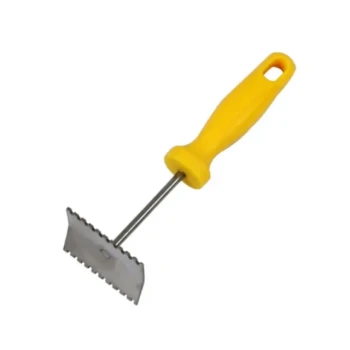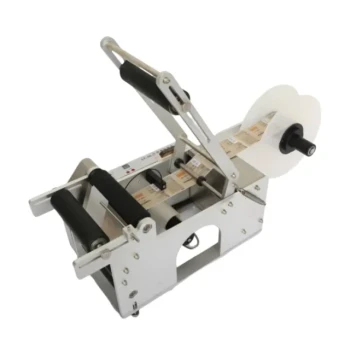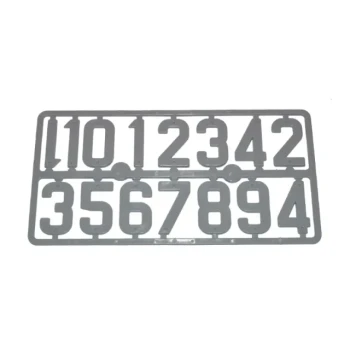In short, Queen Rearing with JZBZ is a popular and accessible method for beekeepers to raise new honeybee queens using a system of specialized plastic cell cups. Instead of requiring the delicate and difficult manual transfer (grafting) of larvae, this system often allows the queen to lay eggs directly into the cups, which are then used to cultivate new queens. This approach simplifies the process, making it suitable for beekeepers at all skill levels.
The core value of the JZBZ system is that it lowers the barrier to entry for queen rearing. It replaces the difficult manual skill of grafting with a straightforward process, allowing beekeepers to consistently produce high-quality queens from their best genetic stock.

How the JZBZ System Works
The JZBZ method is built around a simple but ingenious concept: getting the queen to lay eggs in removable plastic cups. This bypasses the most common point of failure in traditional queen rearing.
The Core Concept: Simplified Larva Transfer
Traditionally, queen rearing requires a beekeeper to use a special tool to scoop a day-old larva out of a honeycomb cell and place it into an artificial wax or plastic queen cup. This is known as grafting and requires a steady hand, good eyesight, and practice.
The JZBZ system (often used with a kit like the Jenter kit) confines the queen on a frame fitted with the plastic cell cups. The queen lays her eggs directly into these cups. The beekeeper can then simply remove the cups containing the young larvae without ever having to touch them.
From Egg to Queen Cell
Once you have cups containing eggs or very young larvae, you attach them to a cell bar, which is then placed into a special frame.
This frame is put into a strong, queenless colony known as a "cell builder." Because this colony has no queen, the worker bees' instinct is to create new ones. They will identify the larvae in your JZBZ cups, build them out into full-size queen cells, and feed them royal jelly.
Maturation and Introduction
It takes approximately 16 days for a queen to develop from an egg to a mature adult. Just before the new queens emerge, beekeepers place each queen cell into its own small mating nucleus colony (a "nuc").
After the queen emerges, she will fly out to mate and then return to the nuc to begin laying. The durable and well-ventilated JZBZ queen cage is often used to safely introduce this new, mated queen into a full-sized colony that needs her.
The Primary Advantages of Using JZBZ
Beekeepers choose this system because it offers a clear path to better, more consistent results with less technical skill required.
Increased Success for Beginners
The JZBZ method's greatest advantage is its accessibility. It removes the need for manual grafting, which is often intimidating and frustrating for new beekeepers.
Improved Queen Quality
By using this system, you can select eggs from your best colony—one that is gentle, productive, or shows resistance to mites. This gives you direct control over the genetic traits you want to promote in your apiary.
Efficiency and Scalability
Once you are familiar with the process, the JZBZ system allows you to produce a significant number of high-quality queen cells with relatively little effort. This is ideal for expanding your number of hives or selling nucleus colonies.
Understanding the Trade-offs
While effective, the JZBZ system is not without its considerations. Objectivity requires acknowledging its limitations.
The Initial Investment
Unlike traditional grafting, which can be done with a single inexpensive tool, the JZBZ method requires purchasing a kit. This includes the cell cups, plugs, cages, and potentially a queen-excluder box.
Hive Acceptance of Plastic
Occasionally, bees can be reluctant to accept plastic components. Beekeepers may need to "prime" the cell cups by coating them with a thin layer of beeswax to encourage the queen to lay in them and the workers to accept them.
Requires a Strong Cell Builder Colony
The success of any queen rearing effort depends entirely on the health and population of the cell builder colony. A weak, underfed, or diseased hive will not have the resources to raise strong, well-fed queens, regardless of the system you use.
Is the JZBZ System Right for Your Apiary?
Making the right choice depends on your specific goals as a beekeeper.
- If your primary focus is learning queen rearing: The JZBZ system provides an excellent, forgiving entry point by removing the most difficult technical step.
- If your primary focus is improving your genetics: This method allows you to reliably propagate queens from your most productive and gentle colonies.
- If your primary focus is expanding your operation: The efficiency of the system makes it ideal for producing multiple queens or nucs with minimal effort per queen.
By removing a key technical barrier, the JZBZ system empowers you to take direct control over the genetic quality and future of your colonies.
Summary Table:
| Feature | JZBZ System | Traditional Grafting |
|---|---|---|
| Skill Level | Beginner-Friendly | Requires Advanced Skill |
| Larva Transfer | Automatic (Queen lays in cups) | Manual (Grafting tool required) |
| Primary Advantage | Consistency & Accessibility | Low initial cost |
| Best For | Genetic control & hive expansion | Experienced breeders |
Ready to take control of your apiary's genetics?
As a leading supplier to commercial apiaries and distributors, HONESTBEE provides the reliable, high-quality JZBZ equipment and beekeeping supplies you need to scale your queen production successfully. Our wholesale-focused operations ensure you get the durable tools for consistent results.
Contact our expert team today to discuss your queen rearing needs and explore our specialized solutions.
Visual Guide

Related Products
- No Grafting Queen Rearing Kit: System for Royal Jelly Production and Queen Rearing
- Brown Nicot Queen Cell Cups for Breeding Queen Bees Beekeeping
- JZBZ Push-In Queen Cell Cups for Beekeeping
- Plastic Chinese Queen Grafting Tool for Bee Queen Rearing
- JZBZ Type Wide Base Plastic Queen Cell Cups for Base Mounting and Queen Rearing
People Also Ask
- What are the signs that indicate a colony needs requeening? Protect Your Hive's Health and Productivity
- What is the timeline for queen breeding? A 28-Day Guide from Egg to Laying Queen
- What do queen rearers do with queens that fail to lay on time? The Critical Quality Control Decision
- What are the two main categories of queen rearing methods? Grafting vs. Non-Grafting Explained
- What are the stages involved in queen raising? A Guide to Controlled, High-Quality Queen Production



















